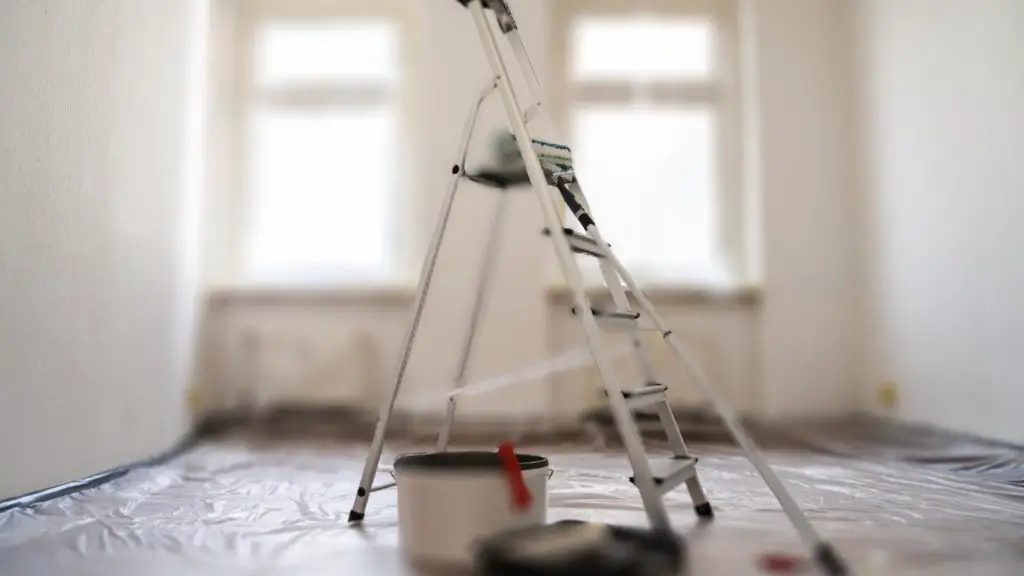Regulating the humidity in the house is necessary to get a good end result of the interior painting!
It is an important player in paints and one that you can control yourself.
In this article I explain why the humidity in the house is important when painting and how to regulate it.

Why is humidity important when painting?
By humidity we mean the amount of water vapor in the air relative to the maximum water vapor.
In painting jargon we talk about a percentage of relative humidity (RH), which may be a maximum of 75%. You want a minimum humidity of 40%, otherwise the paint will dry too quickly.
The ideal humidity for painting at home is between 50 and 60%.
The reason for this is that it must be below 75%, otherwise condensation will form between the layers of paint, which will not benefit the end result.
The paint layers will adhere less well and the work becomes less durable.
In addition, it is very important to properly maintain the film formation in acrylic paint. If the humidity is higher than 85%, you will not get optimal film formation.
Also, water-based paint will certainly dry less quickly at high humidity. This is because the air is in fact already saturated with moisture and can therefore not absorb any more.
Outside often different values apply in terms of RH (relative humidity) than inside, these can be between 20 and 100%.
The same applies to painting outside as painting inside, the maximum humidity is about 85% and ideally between 50 and 60%.
The humidity outside is mainly dependent on the weather. That is why timing is important in outdoor painting projects.
The best months to paint outdoors are May and June. In these months you have relatively the lowest humidity in the year.
It is better not to paint during rainy days. Allow sufficient drying time after rain or fog.
How do you regulate the humidity in the house when painting?
In fact, it’s all about good ventilation here.
Good ventilation in the house is not only necessary to remove air that is polluted by all kinds of odors, combustion gases, smoke or dust.
In the house, a lot of moisture is created by breathing, washing, cooking and showering. On average, 7 liters of water are released per day, almost a bucket full!
Mold is a major enemy, especially in the bathroom, you want to prevent it as much as possible with anti-fungal paint, good ventilation and possibly a mold cleaner.
But all that moisture must also be removed in the other rooms in the house.
If the moisture cannot escape, it can accumulate in the walls and cause mold growth there too.
As a painter, there is nothing more disastrous than too much moisture in the house. So before you start a painting project, you will have to ventilate well to get a good result!
Preparing to paint at home
There are several ways to regulate the humidity in your home during painting projects.
Measures that you must take (well) in advance are:
Open the windows in the room where you are going to paint at least 6 hours in advance.
Ventilate at source of pollution (cooking, showering, washing)
Do not hang laundry in the same room
Use the extractor hood when painting in the kitchen
Make sure drains can do their job well
Clean ventilation grilles and extractor hoods beforehand
Dry wet areas such as the bathroom well in advance
Put down a moisture absorber if necessary
Make sure that the house does not cool down too much, you want a temperature of at least 15 degrees
Ventilate for a few hours after painting too
It is also important for yourself sometimes to air out during the painting. Many types of paint release gases during use and it is dangerous if you inhale them too much.
Conclusion
For a good painting result at home, it is important to keep an eye on the humidity.
Ventilation is the key here!
I'm Joost Nusselder, the founder of Tools Doctor, content marketer, and dad. I love trying out new equipment, and together with my team I've been creating in-depth blog articles since 2016 to help loyal readers with tools & crafting tips.
